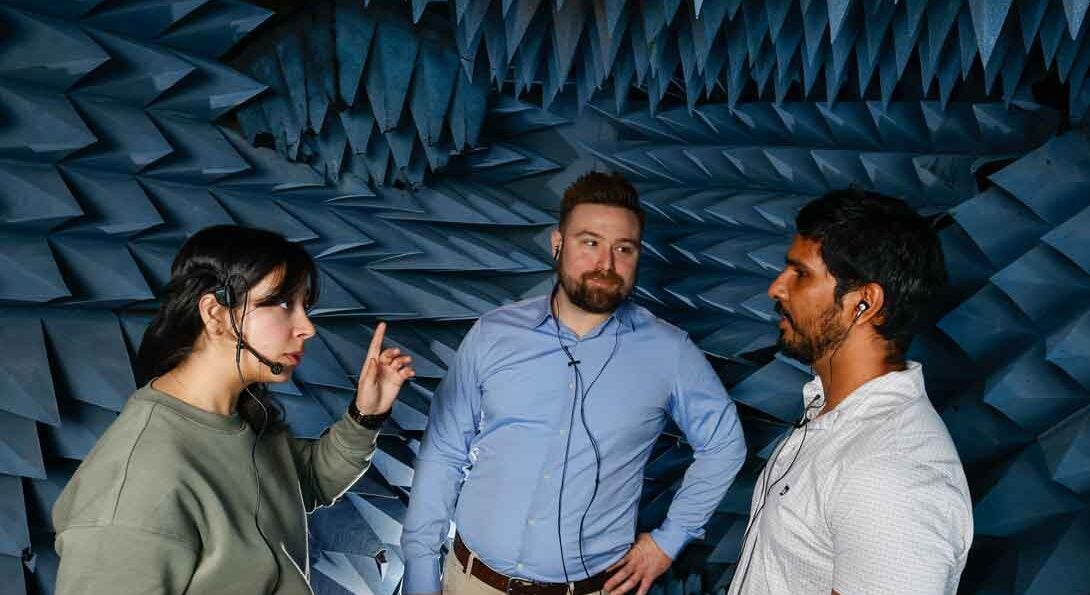Improving hearing at gatherings

Ryan M. Corey, an assistant professor in the electrical and computer engineering department, and his former colleagues at the University of Illinois Urbana Champaign, Manan Mittal, Kanad Sarkar, and Andrew C. Singer, have developed a system to help people hear better in group settings.
“When I talk to people with hearing loss, one of the most common complaints is about crowded restaurants,” said Corey. “Restaurants are difficult for everyone, with or without hearing loss, especially with a large group.”
Corey said conventional hearing aids and other listening devices don’t work well in noisy environments, or for group conversations. They pick up background noise and can’t suss out individual conversations, especially when multiple people are speaking at once.
Remote microphones and microphone arrays can enhance the ability to hear, but these methods require specialized hardware, which isn’t practical for the typical group gathering.
Corey and his colleagues devised a system using items most of us (even grandparents!) use regularly: smartphones, wireless earbuds, or hearing aids. Each person in the group dons their hearing aid or earbuds and places their phone on the table in front of them. The earpieces and phones transmit data to each other, and adaptive signal processing generates an individualized sound mixture for each person.
“We want each user to be able to hear every other user in the group, but not background noise from other people talking nearby,” Corey said. “We also want to remove echoes of the user’s own voice, which can be distracting.”
One challenge is that the phones will record everyone at the table, not just the closest person. Known as crosstalk, this interference can be minimized by muting the microphones of everyone but the person speaking, a common tactic in larger online videoconference meetings. This would be unwieldy in a social setting, so instead of muting the microphones, their proposed system uses adaptive crosstalk cancellation to remove the voices of all other users from each mobile device.